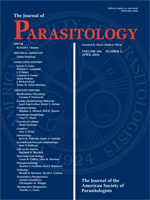Adult and cystacanth forms of the acanthocephalan Serrasentis sagittifer from Australian coastal waters are redescribed and verified as the same species using both molecular and morphological data. This study provides the baseline 18S rDNA, 28S rDNA, and cox1 sequence data to serve as genetic barcode for S. sagittifer. The validity of the currently recognized species of Serrasentis is discussed. The most recently described species are junior synonyms of either Serrasentis nadakali or S. sagittifer, and a number of species are species inquirenda. When using morphological characters to distinguish the species of Serrasentis, consideration needs to be given to the maturity of the specimens, since the trunk elongates and the number and distribution of the ventral combs changes as worms mature, although the proboscis armature itself does not change. A simple key to assist in the identification of species of Serrasentis is provided. Adult S. sagittifer appear to be highly host specific to the cobia, Rachycentron canadum, in northern Australian waters, whereas cystacanths have been reported from a wide range of fish species. The relationship between host length and number of cystacanths shows that most paratenic infections are acquired as young fish, most likely via a crustacean intermediate host.
How to translate text using browser tools
1 April 2018
A Redescription of Serrasentis sagittifer (Rhadinorhynchidae: Serrasentinae) from Rachycentron canadum (Rachycentridae) with Comments on its Biology and its Relationship to Other Species of Serrasentis
Diane P. Barton,
Lesley Smales,
Jess A. T. Morgan
ACCESS THE FULL ARTICLE

Journal of Parasitology
Vol. 104 • No. 2
April 2018
Vol. 104 • No. 2
April 2018




